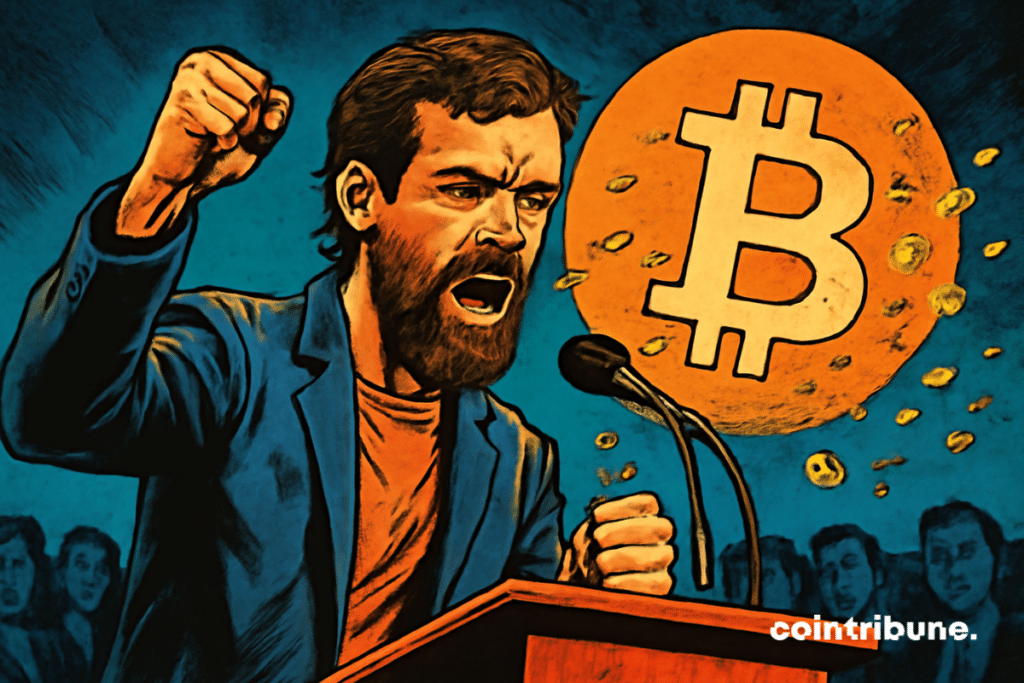Bitcoin: Jack Dorsey Wants To Eliminate "sats" (satoshis), The Smallest Unit Of BTC
Bitcoin moves forward, sometimes stumbles, but never stops intriguing. Today, Jack Dorsey, co-founder of Block, challenges a belief engraved in stone for 15 years: the place of satoshis. Supporting the controversial BIP 177, he wants to rename the smallest bitcoin unit and forever abolish endless decimals. The goal: to make crypto payments as instinctive as a tap on a smartphone.

In brief
- Jack Dorsey supports BIP 177, a proposal that would rename each satoshi as “bitcoin” to eliminate decimals and simplify payments.
- The goal is to boost mainstream adoption: prices displayed in whole bitcoin units would seem more intuitive than complex fractions.
- The community remains split: supporters praise the marketing clarity, while purists fear a historical and technical disruption.
Satoshis: Achilles’ Heel or Immutable Tradition?
The pioneers saw in the “sat” the ultimate nod to Satoshi Nakamoto. However, in the daily life of a merchant, juggling 0.00004321 BTC feels more like a chemistry exercise than a cash register addition. Beginners drop off; sellers sigh. The promise of a simple bitcoin fades among the decimals.
Jack Dorsey states loudly and clearly: each decimal is an invisible barrier to adoption. A customer reading “125,000 sats” doesn’t know if they are holding an espresso or an electric scooter. This confusion breeds mistrust, especially outside the crypto bubble. Dorsey therefore prefers a whole number notation: a price displayed in pure “bitcoins”, even if it breaks habits.
For the average user, the issue is more psychological than technical. A whole number evokes stability; a decimal, volatility. Neobanks have understood this: readability increases conversion. Dorsey’s bet fits into this commercial logic: if bitcoin wants to become pocket money, it must speak the language of pockets.
BIP 177: A Simple Renaming That Shakes the Bitcoin Ecosystem
The BIP 177, written by John Carvalho, proposes a bold sleight of hand: to call “bitcoin” what is currently called “satoshi”, and keep the “BTC” unchanged for the old bitcoin with eight decimals. The result: moving from a decimal system to a whole number display. Technically, nothing changes; psychologically, everything changes.
Supporters hail it as a token split operation, crypto style: a nominal split meant to free the perception of scarcity. Instead of buying 0.0001 BTC, the user gets 10,000 new-school bitcoins. More rewarding, more relatable: the marketing mechanics are clear. Some even see it as a way to initiate automatic saving: it’s more attractive to accumulate thousands of bitcoins than fractions of BTC.
But the rebellion rumbles. Purists shout sacrilege. Erasing the “sat” would mean, for them, erasing part of history. They also fear an accounting nightmare: how to manage the coexistence of two ways to write the same amount? Exchanges, wallets, and Lightning protocols will have to offer a “toggle” button to switch from whole number display to legacy mode. The transition promises cold sweats, but progress always disturbs before it seduces.
In the crypto arena, every unit counts. Jack Dorsey bets on a simple idea: if bitcoin wants to conquer the crowd, it must speak like the crowd. Removing satoshis may be just a vocabulary change, but words shape usage. It remains to be seen if the community will choose boldness over nostalgia. And also find out whether you should buy bitcoin or not at this stage.
Maximize your Cointribune experience with our "Read to Earn" program! For every article you read, earn points and access exclusive rewards. Sign up now and start earning benefits.

Fascinated by Bitcoin since 2017, Evariste has continuously researched the subject. While his initial interest was in trading, he now actively seeks to understand all advances centered on cryptocurrencies. As an editor, he strives to consistently deliver high-quality work that reflects the state of the sector as a whole.
The views, thoughts, and opinions expressed in this article belong solely to the author, and should not be taken as investment advice. Do your own research before taking any investment decisions.